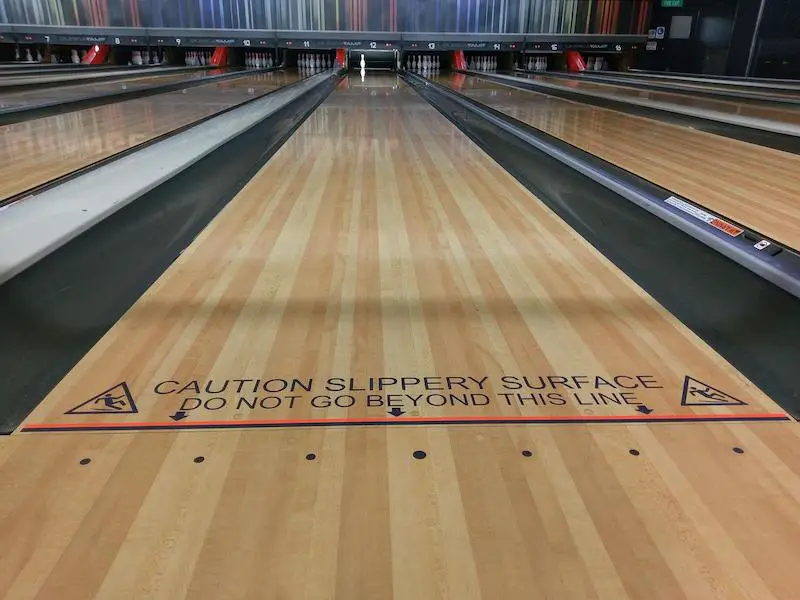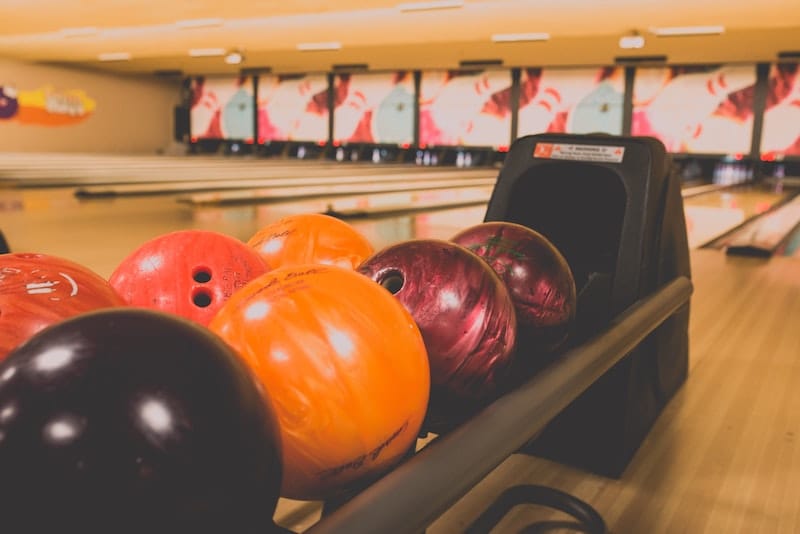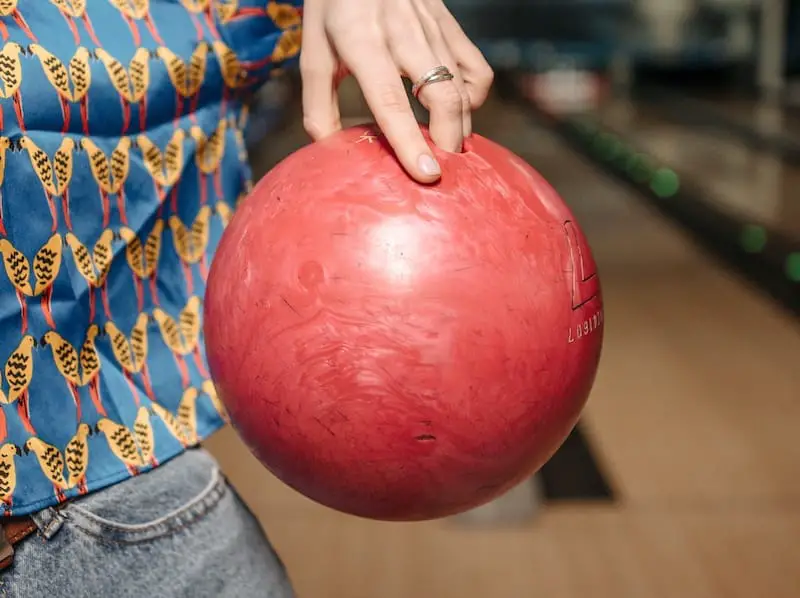Whether you’re a serious bowler or only do it for fun, you may wonder why bowling lanes are slippery. It’s a good question, and the answer may help you get a higher score. But there are more specific reasons that you’d like to know.
Bowling lanes are slippery because the oil helps protect the lane. The oil also helps the ball roll down the lane. When the oil stops, it helps the oil hook so that it can hit the pins to get a strike. And lanes have different oil patterns based on difficulty. Consider how this affects players.
If you want to improve your bowling game, you need to know how it all works. Of course, you need a good bowling ball and some shoes. But knowing why the lanes are slippery can give you an advantage for your next round of bowling. Read on to learn why.

Protects the Bowling Lane
One of the reasons why bowling lanes are slippery is to protect the wood. If you’ve ever gone bowling, you know that the ball can hit the lane at a fast speed. Bowling balls can travel up to 16 to 17 miles per hour on average.
Read how you can check ball speed without a speed gun.
After a few rounds of bowling, a lane could take a beating if it were completely dry. In fact, bowling balls could hit the lane and start sparking before people started using oil. Then, the ball would leave a burn mark on the surface and fly into the gutter.
Because of that, you can get a better shot with the ball. You don’t have to worry about it damaging the lane and letting the damage affect future shots.
Having oil can keep the wood in good condition, so you can play more rounds. That way, you won’t have to worry about playing on a cracked surface. The bowling alley also won’t have to worry about having to replace the flooring as often. It’s easier to replace the oil as it degrades with play.
Easy Maintenance
As mentioned, replacing the oil on a lane is easier than replacing the lane itself. This is good for bowling alleys because they can save money. They can also keep from taking lanes out of commission for too long.
However, easy maintenance helps bowlers as well. It means they can continue to practice bowling day after day with similar conditions.
You don’t have to worry about a bowling alley constantly replacing the wood. While the wood may feel similar, you never know when there might be a slight change in the grain. Having that layer of oil can improve consistency from day to day and lane to lane.
Helps the Ball Roll
While adding oil to the lane can protect it, the right oil pattern can help you as the player. Most lanes have less oil on the sides of the lane than in the middle. If there was an even amount of oil, you would need a more precise shot to keep the ball in the center.
But a lack of oil near the sides can help direct the ball back to the middle. Then, you can have a bit of leeway with your throw, and you still might get a good score. Consider how this works in practice:
- Line up the ball
- Throw the ball, ideally near the center
- Watch the ball roll
- The oil catches the ball and moves it to the center
This is particularly useful for new bowlers as they learn to play well. The oil pattern can help you figure out what works best and what you can improve.
As you advance, you can figure out how to use the oil pattern to your advantage. Then, you can improve your score without needing a ton of practice. Instead, you can focus on the strategy behind throwing your bowling ball.
Gives Harder Hook
As the ball approaches the pins, the oil will eventually end. When that happens, the ball can hook toward the center, and that can help the ball hit the pins. This can give you a good chance of knocking down a lot of pins.
Of course, your ball will need to be in a good spot when that change happens. If the ball is near the gutter, it’s probably not going to suddenly move to the center.
However, if your ball is slightly off from where it needs to be, that hook can help. Then, you may be able to get a better score than you expected while the ball was rolling down.
This curved pattern can help you hit pins 1 and 2 if you’re left-handed. If you’re right-handed, the same technique can help you hit pins 1 and 3. Those pins give you the best chance of getting a strike.
Different Levels of Difficulty
Bowling lanes can also be more or less slippery, and the oil pattern can differ. Professional bowlers often have to bowl on more difficult oil patterns than casual players. For example, a lot of bowling lanes use a house pattern, which offers the following benefits:
- Easy
- Great for beginners
- Large margin of error
This is excellent for people who don’t bowl that often. However, it’s not that challenging for professional bowlers. Because of that, they’ll usually bowl on a sport pattern. That pattern has a much smaller margin of error, so pros have to throw more precisely.
If a beginner tried to use that pattern, their odds of succeeding would be low. But a professional will have the skills and know-how to be able to hit the right target.
As you advance as a bowler, you can look for lanes with harder patterns. Then, you can learn how to adjust your throw to get a strike. And if you go back to a house pattern, you may have no problem hitting a strike.
Final Thoughts
Bowling lanes are slippery for a few reasons. Some of those reasons are practical, such as protecting the wood. But they also make it easier or harder for some people to bowl. Consider how those patterns and the oil overall can affect your bowling game the next time you hit the lanes.


